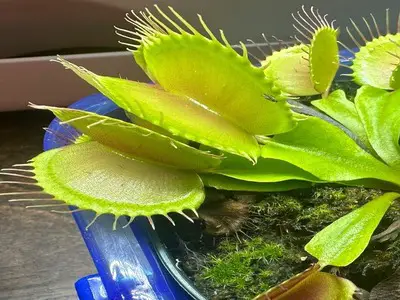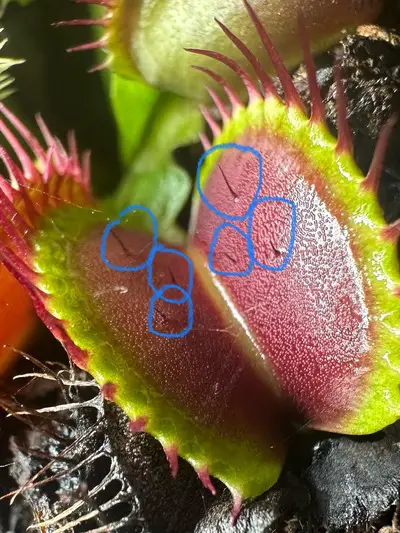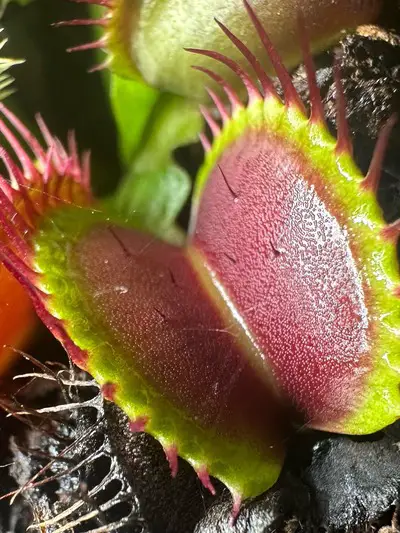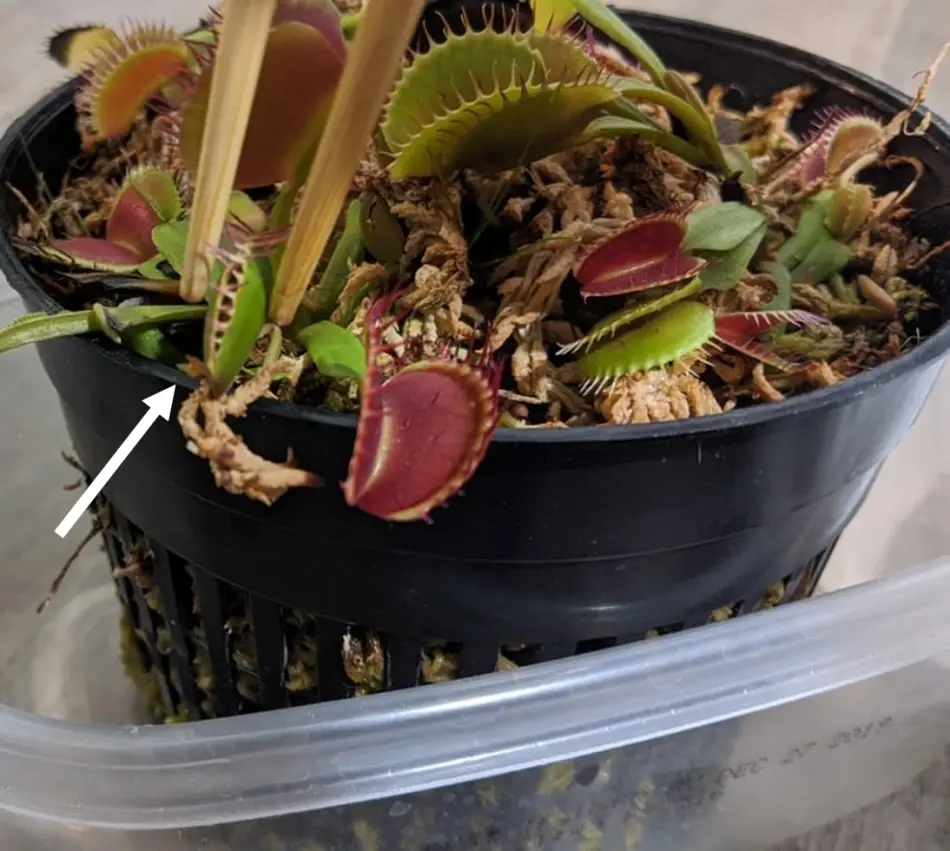Venus fly traps use their leaves to capture insects and consume nutrients. One common meal choice for these plants are flies.
What to Feed Venus Fly Traps
In their natural habitat Venus fly traps consume flies, ants, spiders, slugs, and many other insects.
If you have a Venus fly trap you can feed it with flies to provide sustenance and encourage growth. Venus fly traps do not require insects to survive, but they do benefit from consuming them every once in a while.
Flies are a great food option for Venus fly traps, as they are common, have lots of soft tissue and standard house flies are not very big.
The flies you use can be dead or live. I have included some instructions below on how to feed your Venus fly trap.
Feeding Frequency
For best results, I recommend feeding a single fly or other insect every 2 to 6 weeks.
When feeding the plant, use a single fly that is no larger than 2/3 of the size of the trap you intend to feed. Feed only one leaf of the whole plant.

Once a Venus fly trap has consumed the bug, then you can feed it again. It usually takes over 2 weeks to digest a single small insect.
It is best to select a fly that is smaller rather than bigger. Large insects can overwhelm the plant, who is unable to consume the insect completely. If this happens, the leaf withers and dies.
Feeding multiple flies to your plant at the same time can also affect its health due to overfeeding. This will often cause black leaves.
Can Venus Fly Traps Get Rid of House Flies
Answer: Yes, but only in a small scale
Venus fly traps can help control flies at home. However, their pest control capabilities are overall limited.
A single plant can capture as many flies as the traps it has. Most plants will grow three to 7 traps, so it can catch up to 7 flies when it is at full capacity.
This might sound well, but remember it can take weeks for a trap to reopen.
Realistically a single Venus fly trap plant will catch only a handful of flies every month.
If you have a pest infestation, other carnivorous plants, such as pitcher plants or sundews are a lot more effective. Here is how you can use those.
How to Feed Flies to Venus Fly Traps
Venus fly traps are effective predators. At home or in the wild, most Venus fly traps have no issues capturing insects on their own.
The best way to feed your plant is by placing it in a location where it can have plenty of access to bug. Then, the Venus fly trap will capture insects on its own.
They attract insects such as flies or ants with sweet nectar inside their leaves. Once the plant detects the insect, the leaf closes to attempt to capture food.
However, if your plant is unable to capture insects, you should consider feeding it. Flies are a good alternative, but there are many other I have listed below.
Instructions to Feed Live or dead Flies
First, let’s start with some basics… In every trap you will see three thin filaments on each side. Those filaments are called trigger hairs and are there to sense movement. When touched twice in a row they signal the leaf to close. Once closed, they will promote the production of digestive juices if they sense more movement inside the leaf.
With that in mind, here are the instructions for feeding.
1.- Locate the trigger hairs inside a trap
Look for a large and healthy trap to feed your plant. Then, look for the filaments in east lobe.
In the image below I have marked the trigger hairs from one of my plants:


2.- Drop the Food
Grab your insects and place it inside of the leaf of your plant. Regardless if the fly is dead or alive you will need to touch the trigger hairs twice while you drop the food.
You will need to be quick to allow the plant to close and keep the insect inside. The leaf should close and trap the insect.
3.- Stimulate the Leaf (this step is only applicable to dead bugs)
Once the insect is trapped inside the leaf you might need to continue to stimulate it.
When you feed dead bugs, your plant will detect the lack of motion and reopen. To avoid this you will need to trick the plant into thinking it it detecting motion.
Grab the trap with your hands. Place a finger in each side and start doing a soft tapping motion for 30-40 times.
In the picture below I am stimulating the leaf with chopsticks:

4.- Wait for digestion to take place (it is a long process)
Once your Venus fly trap start digesting the fly, it will take several days or even weeks to reopen.
It is perfectly normal for your plant to take that long consuming its food.
In some cases a leaf can even die in the process and that is normal. For that reason, it is only recommended to feed one leaf at a time.
For more information on how to feed dead flies to your Venus fly trap, check out this other article.
What to Do If Your Venus Fly Trap Does Not Work
Sometimes leaves in a Venus fly trap won’t close, making it impossible for the plant to consume insects.
In many cases this problem is either caused buy the age of the leaf (the leaf is just old and exhausted) and in other by poor growing conditions.
Venus fly traps that are struggling to survive will often deprioritize their insect trapping mechanisms focus on photosynthesis.
To ensure your plant is healthy and it is not suffering from this, check out this article to go over its complete care instructions. Sometimes a small mistake can have great effects, but it is often a very easy fix 😉
Food Alternatives for Venus Fly Traps
Venus fly traps can eat almost any type of bug that is small enough to fit inside their leaves. Here are some common options:
- Cricket
- Mealworms
- Bloodworms
- Fruit flies
- Gnats
- Ants
- Rollie pollies
- Beetles
- Spiders
- Ladybugs
- Grasshoppers
- Mosquitos
For a complete list with more food options, check out this article: Complete List Food Options for Venus flytrap
What is the most important part of a feeding a Venus fly trap is to avoid feeding human food to your plant. Chicken, meat, fruit, candy, hamburger, gummies or cheese are all unsuitable for carnivorous plants.
Feeding human food to your Venus fly traps will cause black leaves, attract mold, and overall affect the health of your plant!
For more information on Venus fly trap care, read this free growing guide.

